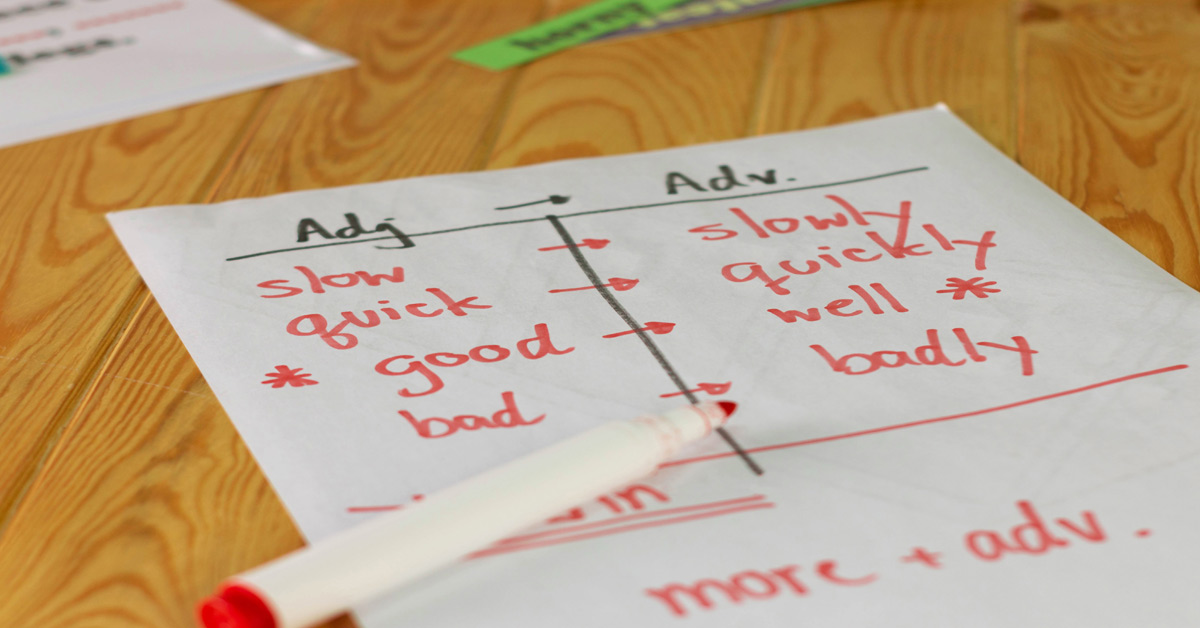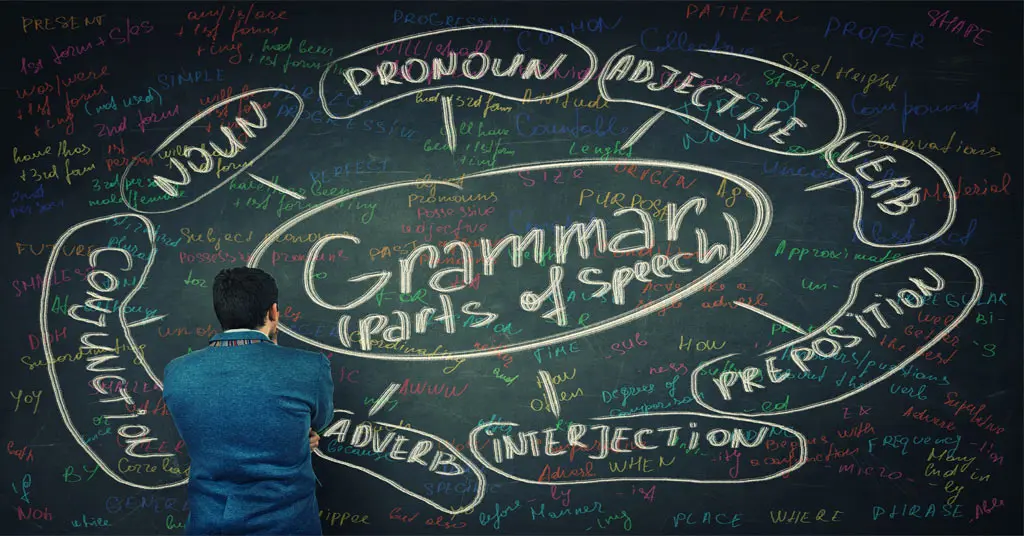The SAT® Writing Test will ask you to read passages, find errors, and fix them. The questions in this portion of the exam are multiple-choice. They will test you on five main skills: Command of Evidence, Words in Context, Analysis in History and Science, Expression of Ideas, and Standard English Conventions.
The College Board® describes Standard English Convention questions* as: “The building blocks of writing: sentence structure, usage, and punctuation. You will be asked to change words, clauses, sentences, and punctuation. Some topics covered include verb tense, parallel construction, subject-verb agreement, and comma use.”
This article will break down what you need to know about pronoun-antecedent agreement, including how to solve usage errors that require your ability to improve pronoun-antecedent agreement errors.
What Is a Pronoun?
A pronoun is a word that stands in for a noun. Here’s a look at the types of pronouns:
Personal pronouns are used to replace common nouns and proper nouns.
- Personal pronouns in the singular form include the first-person “I” and “me,” the second-person “you,” and the third-person “she,” “her,” “he,” “him,” and “it.”
- Personal pronouns in the plural form include the first-person “we” and “us,” the second-person “you,” and the third-person “them” and “they.”
Possessive pronouns are used to replace a noun that has ownership.
- In the singular form, these include “my,” “mine,” “its,” “your,” “yours,” “his,” and “hers.”
- In the plural form, these include “our,” “ours,” “your,” “yours,” “their,” and “theirs.”
Indefinite pronouns are used to replace generalized or unspecified things.
- In the singular form, they include “something,” “anything,” “everything,” “nothing,” “someone,” “anyone,” “everyone,” “no one,” “each,” “either,” “neither,” and “one.”
- In the plural form, they include “both,” “several,” and “many.”
Some indefinite pronouns function in both the singular and the plural forms. These include “all,” “some,” “any,” and “none.”
Demonstrative pronouns are used to replace things.
- In the singular form, they include “this” and “that.”
- In the plural form, they include “these” and “those.”
What Is an Antecedent?
The antecedent is the word the pronoun replaces.
Here is an example: The students left their backpacks on the bus while touring the museum.
In this sentence, the pronoun “their” refers to the “students.” In this sentence, “students” is the antecedent.
Now that you know about antecedents and various types of pronouns and their uses, you should know how to spot pronoun-antecedent errors.
What Kinds of Errors Should I Look For?
There are two types of pronoun-antecedent agreement errors in SAT Writing tests: disagreement in person and disagreement in number.
- Disagreement in Person
A disagreement in person occurs when a first-person pronoun describes a second- or third-person noun. The type of person that describes the pronoun must match the type of person that describes the noun.
- Disagreement in Number
A disagreement in number occurs when a singular pronoun is used to describe a plural noun, or if a plural pronoun is used to describe a singular noun.
Common Errors With Pronoun-Antecedent Agreement & How to Solve Them
To determine if the sentence has errors, first pinpoint the pronoun and antecedent. You can then ask yourself, What needs to change? Let’s take a look at some common errors:
1. There may not be an antecedent at all.
If the underlined text contains a pronoun that lacks an antecedent, you will have to make an improvement. Sometimes the antecedent is present but not clear.
Here is an example: It is not important to do.
It is not clear what “it” is describing.
An improved sentence might look like this:
It is not important to do the dishes.
2. There may be too many antecedents.
If there is more than one antecedent in the sentence, it is unclear which noun a pronoun is describing. If you find that the underlined material contains more than one antecedent, you will need to make edits so that it is clear which noun is described by the pronoun.
Here is an example: He bought the vase and the dish online, but it had broken in the mail.
Because “it” could describe either the “vase” or the “dish,” there are too many antecedents for the sentence to be logical.
To fix this error, you can take out the pronoun and replace it with a noun.
He bought the vase and the dish online, but the dish had broken in the mail.
He bought the vase and the dish online, but the vase had broken in the mail.
3. The antecedents and pronouns may disagree in number or in person.
It is common that you will need to make an improvement for pronouns and antecedents that disagree in number or person. These questions may be complicated by clauses between the antecedent and the pronoun. They may also be more challenging to spot if the antecedent comes after the pronoun.
Here is an example of a pronoun-antecedent disagreement in number:
The women’s soccer team drove three hours for her game this weekend.
The antecedent “team” is plural, and the pronoun “her” is singular.
To improve the logic of the sentence, both the antecedent and the pronoun must be plural.
The women’s soccer team drove three hours for their game this weekend.
Here is an example of a pronoun-antecedent disagreement in person:
I bought the lunch for we.
In this sentence, “we” is the third person. It is in disagreement with the first person “I.”
To correct this sentence, both the antecedent and the pronoun should be in the same person. Replace “we” with the first-person “us,” and the sentence is logical.
I bought the lunch for us.
In this sentence, “we” is the third person. It is in disagreement with the first person “I.”
To correct this sentence, both the antecedent and the pronoun should be in the same person. Replace “we” with the first-person “us,” and the sentence is logical.
I bought the lunch for us.
4. There may be inconsistencies in pronoun usage.
This error is common when “you” and “one” are used interchangeably. When replacing an antecedent with “one” or “you,” use the same pronoun consistently.
Here is an example of what this error could look like:
After one registers for the SAT exam, you should begin studying and preparing.
Improve this sentence by using either “you” or “one,” but not both.
After one registers for the SAT exam, one should begin studying and preparing.
After you register for the SAT exam, you should begin studying and preparing.
With this information, you should be able to easily spot and address pronoun-antecedent agreement errors on the SAT Writing tests. If you come across underlined material that contains a pronoun, look for the common errors we have listed, and you should be able to nail the right answer!
You can practice these tips for pronoun-antecedent errors and get realistic experience with the SAT Writing exam using UWorld’s SAT Prep Course. Our online learning tools are effective in streamlining your study plan and improving your scores. Try the performance tracking tool to track your improvements throughout your practice work. You can use the detailed question explanations to learn from your mistakes and deepen your understanding of pronoun-antecedent agreement errors. Try it out! Also, check out how to prepare for SAT Writing and a complete prep guide for SAT® writing to learn more.




